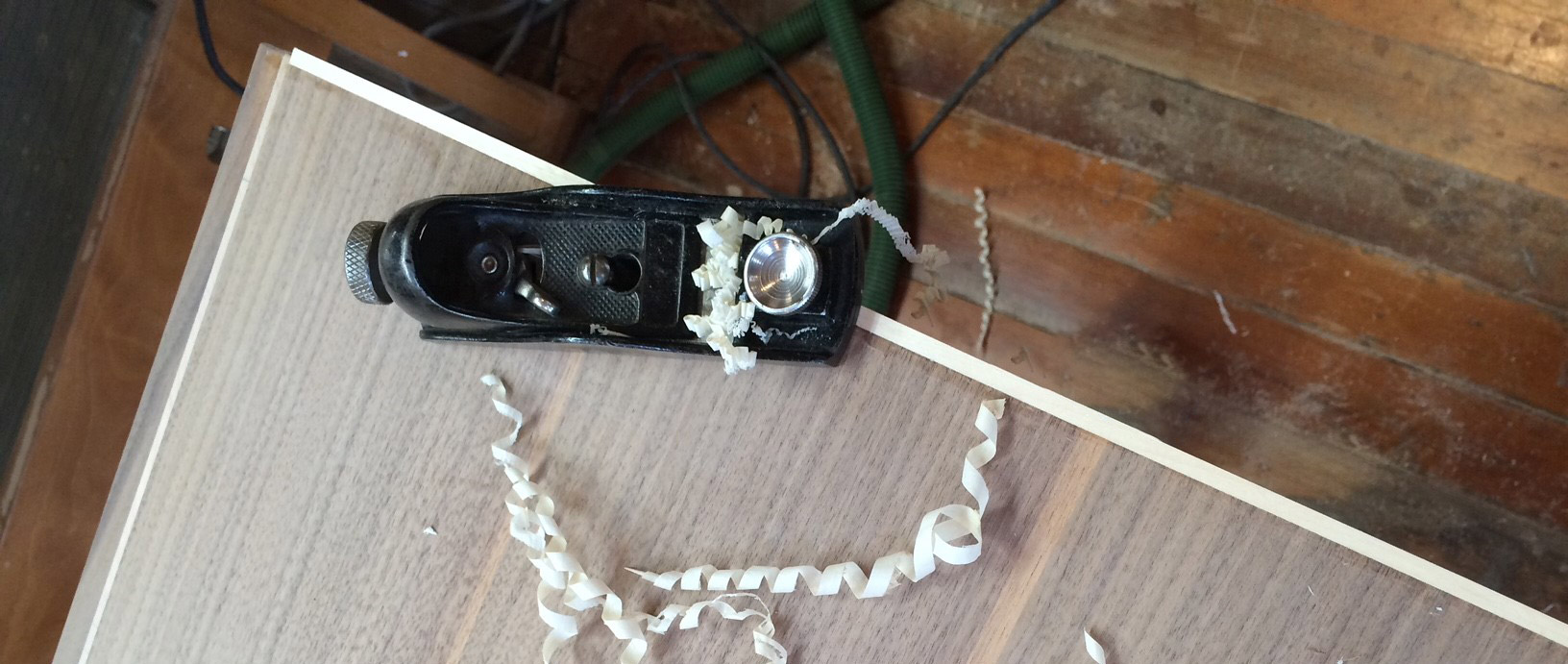In an earlier piece, I wrote about some lighthearted moments in my early days as a woodworker, and much of the craziness seemed to emanate from my time with my first boss, Al. Perhaps I poked too much fun at him, but there is one thing for which I actually am indebted to him: he taught me almost everything I know about running a woodworking studio/business.
Now, I should point out, in the way you might presume. After observing him studiously for nearly two years I was in his employ, I realized he was kind of a divining rod. I literally make it a practice to not do anything he did, and do everything he would not. While it would be something of a stretch to say that I am knocking on the door of the Fortune 500, for more than 40 years my studio has run amazingly smoothly and free of any financial issues. (In fact, we have just published a new workshop offering here at the Ebanista School of Fine Woodworking called Shop Economics and would encourage you to check it out).
In some respects, I think you could say that Al ran his cabinet shop in a way that managed to make money. Kudos to him. But that is a pretty lightweight way to determine if he was managing it successfully. Not a single person who worked for him ever parted on good terms, nor do I believe the majority of his clients feel like they had been treated fairly. He rarely had repeat customers. Again, acknowledging that I am no business maven, from my point of view, customers who come back again, (and again- I have one client who has commissioned north of one hundred pieces. Am I proud of that? Inordinately, and very grateful,) are the best sign of a successful business. He showed no loyalty to his clients, and in turn, they felt none towards him. Big mistake.
Rule # 1: DO ANYTHING FOR YOUR CLIENTS
He was serially dishonest to his clients. Some of the time they were outright untruths. Often they were what might be referred to as an onerous white lie. He would tell them he would deliver a piece by a certain time and not even come within years. One time while he was out, I answered the phone- we were supposed to also be secretaries when he was not in- and the following conversation ensued:
“Hello. Al’s cabinet shop.”
“Hi, this is Mrs. Jensen. Do you know if my table is ready?”
“I am sorry, Mrs. Jensen. We are not working on any tables just now, what does it look like?”
“It is made of black walnut with tapered legs.”
“Could you hold on just a second. I will go out in the shop and take a look”.
(I asked my coworkers. One of them trotted up to the loft to a table covered in dust that had been there, apparently, for many years.)
“We found it, Mrs. Jensen. But no one can remember ever seeing it being worked on”.
“Hrrrrrrmph. He promised it to me by Thanksgiving.”
“Ma’am, it is only June.”
“Six years ago!!”
When he got back a little later,
I told Al “ That a Mrs. Jensen had called.”
He panicked and asked, “Did you tell her that we were working on her table?”
“Why would I tell her that? We are not.”
“You should have lied to her.”
“You pay me $2.45 an hour. I pray that I never sell my soul to the Devil, but I sure am not going to do it for that.”
Rule # 2: NEVER LIE TO YOUR CLIENTS
In 43 years I have never once delivered a commission late. It is so easy to do and I KNOW my clients feel respected. They tell me so.
Al also had another curious business practice: he often padded the charges to his best clients. His rationale was that they were rich, so they could afford it. Several people over the years have suggested I charge my wealthier clients much heftier fees. Really? Where is the decency or logic in that? I have sometimes gifted them something extra so that they know how much I appreciate their support of my work.
Rules #3 & 4: NEVER “PAD” CHARGES ON TO YOUR CLIENTS. AND NEVER TREAT YOUR BEST CLIENTS AS ANYTHING BUT YOUR BEST CLIENTS
In yet another shining example of Al’s business acumen, he made it a practice to pick petty fights with his employees after they had been with him for a while. He confessed that in that way he could get them to quit and hire new guys for a few dollars less. Unbelievable. Just when people have gotten some real experience and are more valuable to you, you run them out in an attempt to save a few pennies.
Rule # 5: DO MORE FOR YOUR EMPLOYEES AS THEY GET MORE KNOWLEDGEABLE AND MORE VESTED IN YOUR WORK
Be loyal and grateful to them, and prove it to them financially. You will all win.
You would think it would be child’s play to master the decidedly uncomplex notion of running a business on the very reduced scale of a small furniture studio. Anyone certainly can, but you have to see it as important. My incentive? Not running it well means I am ultimately not going to be able to keep my studio open, and I will not be able to do the work I love so much. So, thanks, Al. I owe you one.



